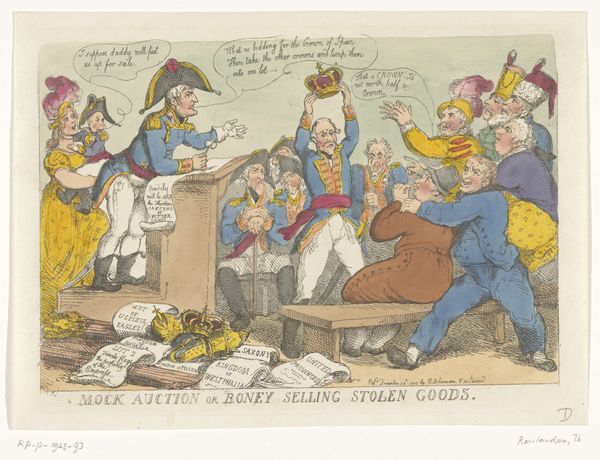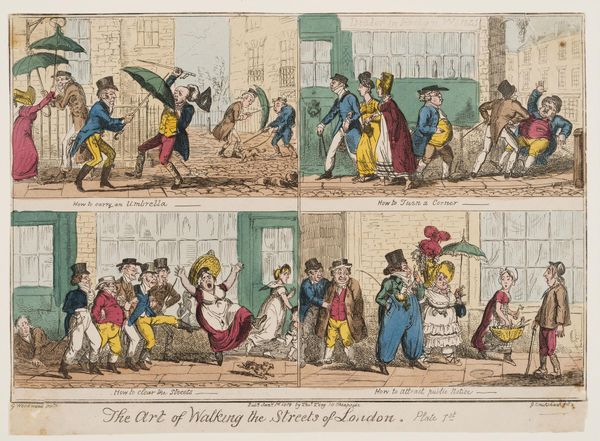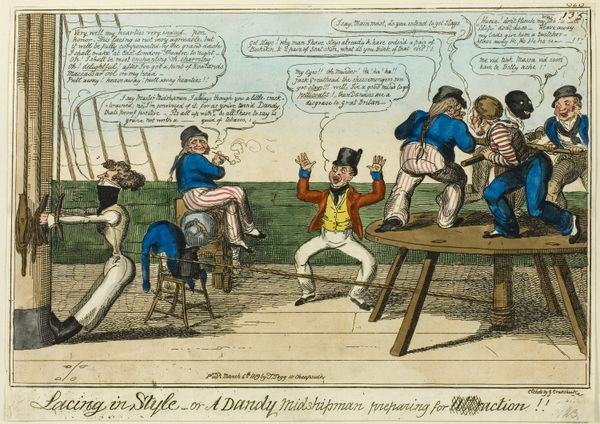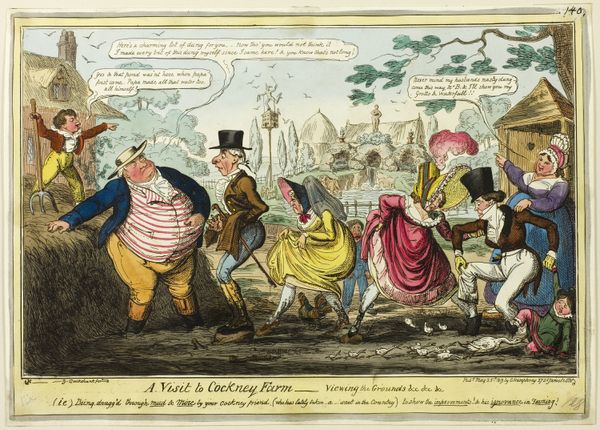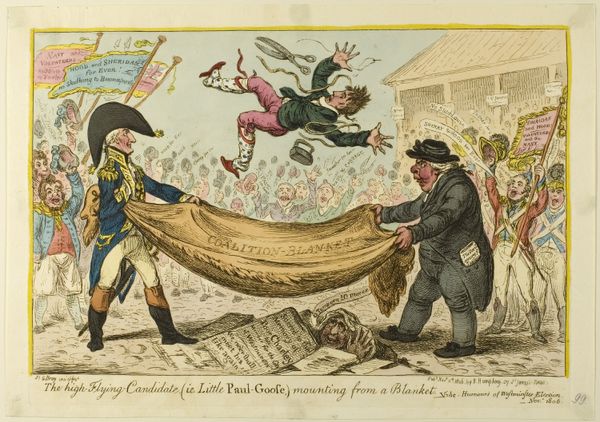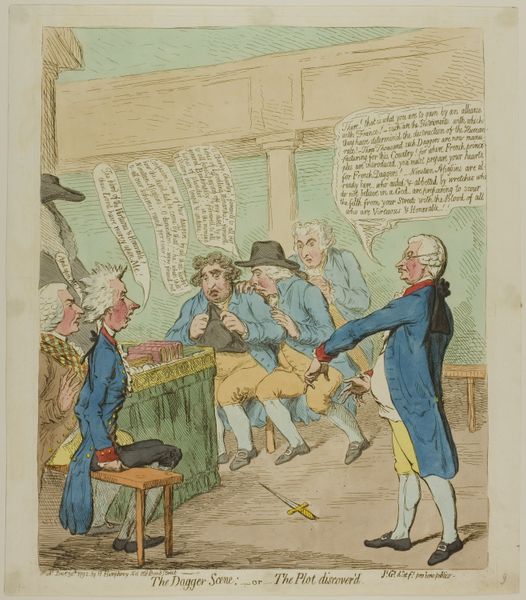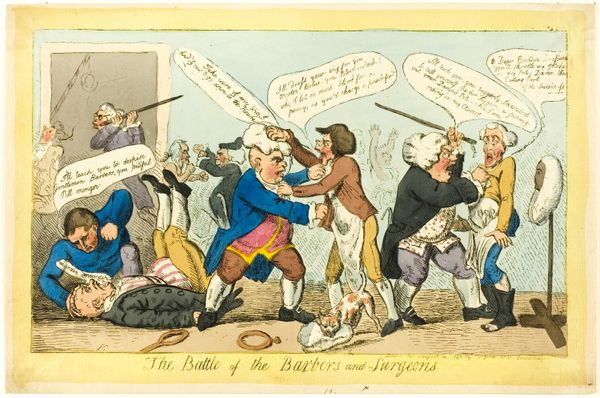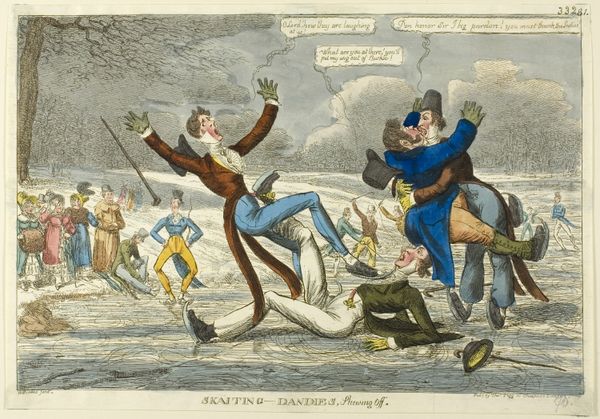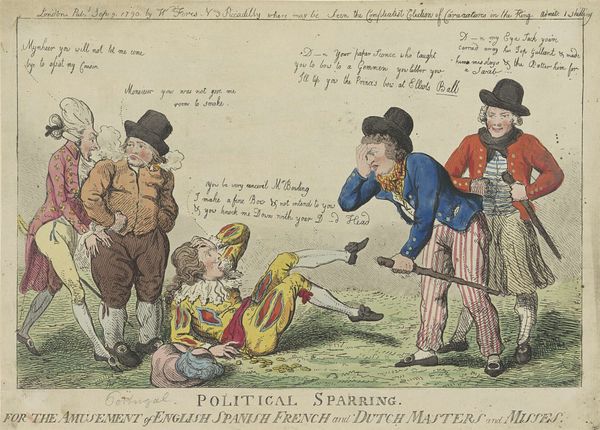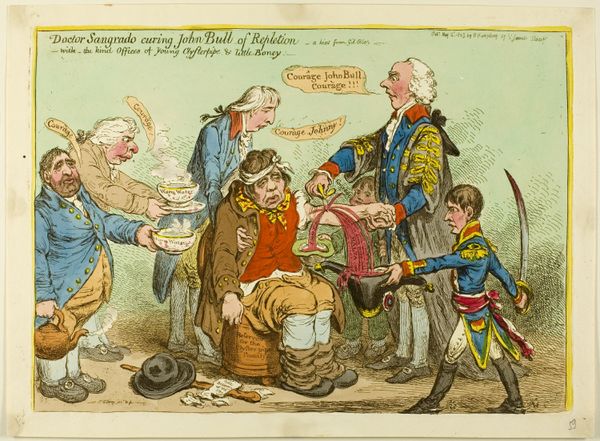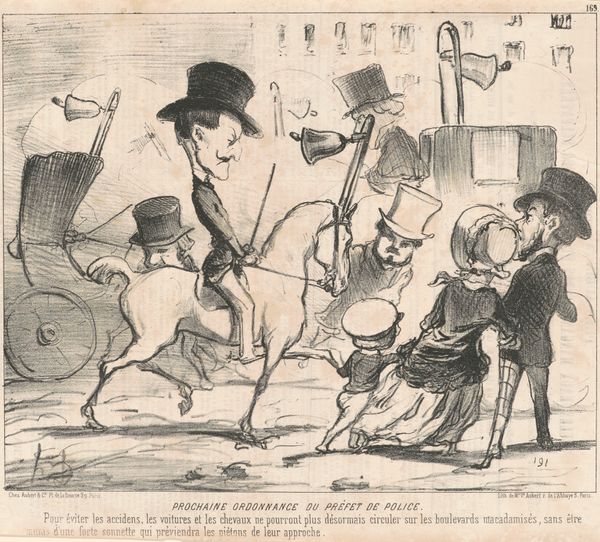
drawing, print, etching, paper
#
drawing
#
narrative-art
# print
#
etching
#
caricature
#
paper
#
romanticism
#
genre-painting
Dimensions: 218 × 329 mm (image); 247 × 344 mm (plate); 252 × 363 mm (sheet)
Copyright: Public Domain
Editor: This is “Clearing Away the Rubbish,” an etching by Charles Knight, created in 1811. The scene is crowded and somewhat chaotic, almost like a humorous caricature of labor. What can you tell me about the context surrounding this image? Curator: Well, the title itself is a big clue. "Clearing Away the Rubbish of Old Drury" almost certainly refers to the demolition or renovation of the Drury Lane Theatre, a major cultural institution in London. We have to remember the context of printmaking at the time. Prints, like this etching, were often politically charged. Editor: So it’s not just depicting a construction site? It has deeper significance? Curator: Precisely. Ask yourself: What might the "rubbish" symbolize beyond just building debris? Editor: Perhaps something about theatrical taste or management? It looks like there’s a drunken figure in a wheelbarrow being carried. That seems important. Curator: Good eye. The figure could represent an out-of-favor actor, a manager who was not popular, or even the old, outdated theatrical styles being swept away for the new. The supporting figures, some clearly exhausted but some celebratory with drinks, represent how cultural changes impacted individuals, not just institutions. Does knowing that affect how you view this Romantic-era image? Editor: Definitely. What seemed like simple laborers now look like symbols of change, participants in this cultural shift. It also casts those speech bubbles in a different light - the figures seem to be debating their roles, complaining and celebrating what's happened. It's far more layered and rich than I initially realized. Curator: Exactly. By understanding the context and how the piece speaks to institutional histories, we get more in touch with the humor of the day as well as see the complex underbelly of art’s relationship with political and social climates.
Comments
No comments
Be the first to comment and join the conversation on the ultimate creative platform.

